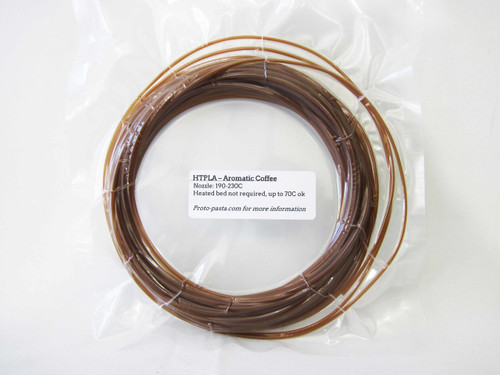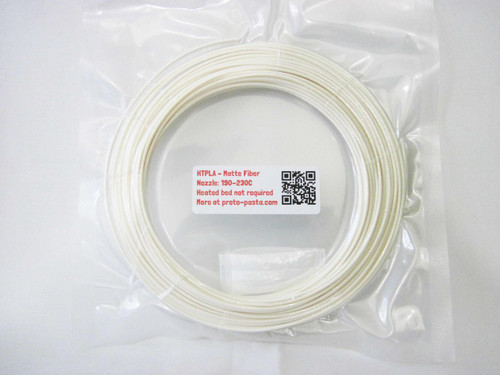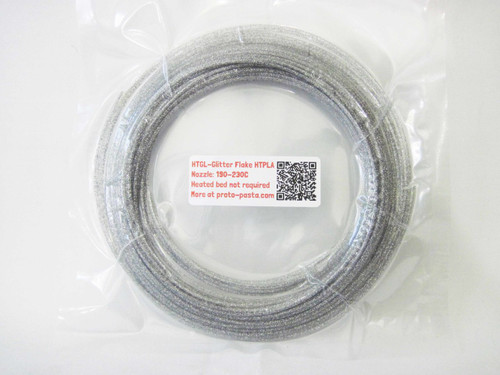- All material is sealed with desiccant in a plastic bag
- Usable on all PLA-compatible printers, such as Makerbot, Ultimaker, Printrbot, Lulzbot, and more!
- High Performance HTPLA - Aromatic Cinnamon
- Prints with standard PLA settings - no heated bed or fancy hardware required
- No abrasive fillers so expect normal wear with standard nozzles
50 G Sample of 1.75mm Proto-Pasta High Performance HTPLA - Aromatic Cinnamon Filament.
We first experimented with adding scent to Proto-pasta more than one year ago. The idea was to take our favorite desktop process, and make it more pleasing! 3D Printing is an industrial process in our personal space so it should be neutral, if not pleasant smelling, right? We thought so. Well, smell, much like music, can take you away to another place. There is a strong emotional tie which naturally leads to thoughts of holiday time. Well, here we are in the "holiday season". What started as an experiment in creating Pumpkin or Holiday Spice had such a clear cinnamon influence that we're calling it Aromatic Cinnamon HTPLA. Enjoy a more pleasant printing experience this holiday or any day! The dark, rich translucent brown pleases with red and copper tones depending on thickness and light.
Like our other HTPLAs, Aromatic Cinnamon can be "Heat Treated" to increase crystallinity for "Higher Temperature" resistance compared to standard amorphous PLA, ABS, or co-polyesters like PETG!
This otherwise odorless plastic releases an invigorating toasted cinnamon scent when heated. Aromatic Cinnamon has a deep translucence, but turns opaque when heat treated (or crystallized) for a more wood-like finish. With a more crystalline structure, HTPLA's Heat Deflection Temperature (HDT) can be practically elevated to 120C (250F) or more depending on post-processing. This means parts retain more stiffness and form to higher temperatures, like on hot summer days!
For this improved the performance, your prints should be baked in an oven until you see a change from translucent to opaque with reduced gloss. This visual change indicating the improved performance! We've seen the change take place in 5-10 minutes on thin walled parts but can take an hour or more. We've had good luck in a quality, at home convection oven at 110C (225F). Parts will get very "floppy" before becoming more firm, so please leave supports on your parts and bake them on a flat, non-radiating surface (like glass, ceramic, or composite). Parts can be baked at a lower temperature, though must be above the glass transition (55-60C) for any change to occur.
In our experience, good results were achieved using standard PLA parameters ranging from 190-230C nozzle with standard build surface preparation (blue tape, glue stick, or BuildTak). No heated bed required. Some shrinkage will occur in the annealing process, so dimension critical parts may need to be scaled appropriately (as much as 2.5% in our experience).







